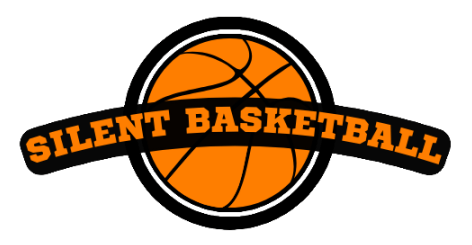Table of Contents

Living in an apartment or small residence often comes with many restrictions. If you are a basketball enthusiast, the biggest challenge of indoor basketball practice is avoiding disturbing others. A regular basketball bouncing on wooden floors or tiles produces a loud “thud” sound, and the noise and vibrations can travel through walls and ceilings. It seems like your favorite sport might not be possible at home.
The good news is that with the right equipment and training methods, indoor basketball practice is not only feasible but also highly effective. Whether you want to stay active, improve your ball-handling skills, or provide a safe indoor play option for your children, there are practical solutions designed specifically for apartments and small spaces.
Why Practicing Basketball Indoors Is Challenging
Practicing at home sounds convenient — but a regular basketball presents several issues:
- Noise complaints — Rubber basketballs typically reach 80–90 decibels on hardwood floors, which is equivalent to a loud alarm clock. In an apartment, this noise can quickly become unbearable for neighbors.
- Floor damage — Hard rubber can scratch or dent hardwood floors, tiles, and laminate flooring.
- Space constraints — Apartments are not typically designed for sports, and a standard basketball can feel cumbersome in a small living room or hallway.
These issues lead many people to give up on practicing at home. However, with proper adjustments, you can reintegrate basketball into your daily life.
Advantages of Indoor Basketball Practice
Indoor basketball practice offers numerous advantages, particularly for those living in apartments:
- Year-round training — You can train regardless of rain, snow, or extreme heat.
- Stay fit at home — Instead of sitting at a desk or on the couch all day, you can maintain vitality through short bursts of high-intensity activity. Physical activity also benefits adults — improving cognitive skills and reducing anxiety and depression symptoms. (cdc.gov)
- Family-friendly fun — Children can safely play basketball indoors, reducing screen time.
- Maintain ball feel — Even simple dribbling and passing drills can help you maintain muscle memory and ball feel.
Indoor training is not a downgrade — It’s a way to continue improving your skills even when outdoor courts are unavailable.
Essential Equipment for Apartment-Friendly Practice
To make basketball training truly suitable for apartment living, two pieces of equipment are essential:
Foam airless basketball

Unlike traditional rubber balls, foam airless basketball is designed to absorb impact and reduce noise. They bounce at approximately 80-85% of the height of a standard basketball, with a feel similar to a real basketball but without the loud thud. Due to their soft material, they won’t scratch or damage floors, making them an ideal quiet basketball for home use.
Wall mounted mini basketball hoop

Even in a small apartment, you can practice shooting. The wall mounted mini basketball hoop is compact, safe to install, and designed specifically for indoor spaces. You can mount it on the wall or door of your bedroom, living room, or even office, allowing you to practice shooting anytime without worrying about space constraints.
With these two pieces of equipment, any apartment can be transformed into a cozy space for playing basketball.
Effective Methods for Indoor Basketball Practice

Even in limited spaces, there are effective training methods:
Stationary dribbling drills
Cross-over dribbling (alternating left and right hands), between-the-legs dribbling, and behind-the-back dribbling can all be performed in place.
Use a silent basketball to reduce noise.
Wall passing
Practice chest passes and bounce passes from a few feet away from the wall.
Improve passing strength and accuracy without a partner.
Close-range shooting
Use the indoor miniature basketball hoop to practice layups and shots near the backboard.
Focus on proper form and control, not long-range shots.
Children's combination training
Parents can join their children in combination dribbling and shooting exercises.
Indoor game is not only safe but also keeps children active and reduces screen time.
Tips for Effective Indoor Practice Without Disturbing Neighbors
Choose the right space—areas with carpets or mats naturally reduce noise.
Schedule practice times—Even though a foam basketball that bounces reduces noise, late-night practice may still disturb neighbors, so avoid dribbling too late.
Add a mat — EVA foam mats or sports mats can further absorb impact sounds.
Break training into segments — Short, focused training sessions of 15 to 20 minutes are more efficient.
With these adjustments, you can practice with peace of mind without worrying about neighbor complaints.
Who Is Suitable for Indoor Basketball Practice?

Apartment residents — If nearby outdoor courts are too far or inconvenient to access, indoor basketball practice is an ideal choice.
Parents with children — Allow children to safely release energy without causing damage at home.
Busy adults — Can squeeze in training time before work, after dinner, or during breaks.
Nighttime basketball enthusiasts — practice shooting and dribbling without disturbing others.
Conclusion
Indoor basketball practice allows you to maintain your skills, stay active, and enjoy the fun of basketball even if you live in a small apartment. Don’t let apartment living hinder your pursuit of what you love, turn your home into a quiet, safe, and neighbor-friendly mini basketball training ground!
